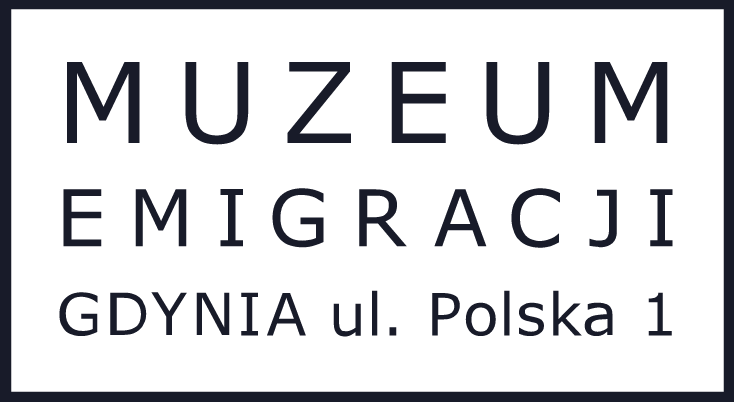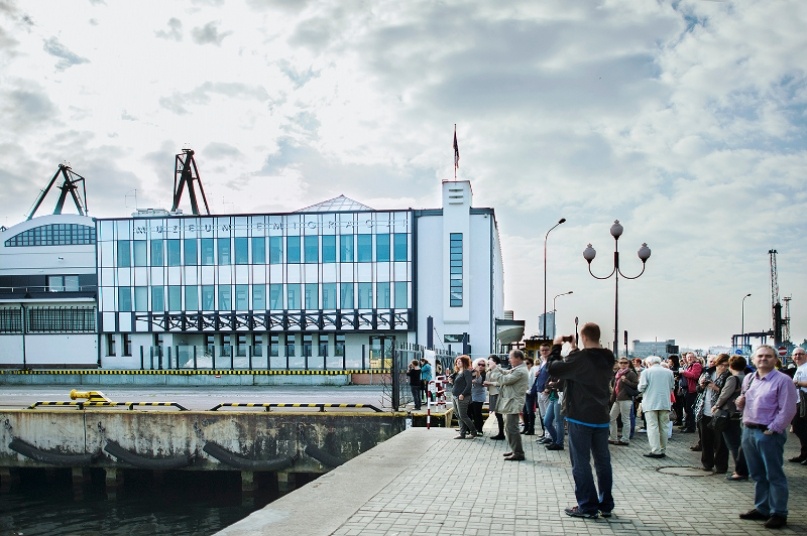The Emigration Museum in Gdynia – which has been actively operating in the public space for two years – is just a step away from moving into its future headquarters. The construction works in the historical Marine Station have concluded and after 70 years, it pleases the eyes of the citizens of Gdynia with its harmonious body again. The most representative building of Gdynia – which served as a symbol of a country deserving its presence by the Baltic Sea – not only has been restored, but also modernized and adapted to the needs of a modern, multifunctional institution of culture. The last phase of the project is about to start i.e. the production of the permanent exhibition. The first half of 2015 will see the opening of the only Emigration Museum in the country under the meaningful address: Polska Street 1, Gdynia.
Although the building hasn’t been open to visitors yet, it has already transformed the panorama of the quayside that’s frequented by the citizens of the city. The edifice has served as one of the most distinctive landmarks of Gdynia, but not only – the Station, built in 1933, had serviced the emigration traffic for many years and it was here that thousands of people set off into the world. Many domestic and international routes met here, legendary Polish ocean liners moored here, with m/s Batory among them. The emigration history of Gdynia, the portside location, and the monumental edifice of the Station together make for the perfect setting for an institution which aims to return the history of the Polish emigration to the right place in the national heritage.
The Marine Station was severely damaged during World War 2 – the North-Western part of the building suffered as a result of air raids. The edifice was scarred with a characteristic asymmetry for the next 70 years. During the postwar reality, the Station regained its previous role, but the passenger traffic was not as dynamic as before. 1988 marked the end of an era – that is when „Stefan Batory” embarked on its last journey. Two years later, the building was included in the register of historic monuments.
The reconstruction and adaptation works at the Marine Station and its adjacent Transit Warehouse have been underway since May 2013 and were conducted according to the design by ae fusion Studio from Cracow, which assumed the reconstruction according to the original 1933 blueprints together with the missing North-Western corner, as well as the adaptation of the historical building to its completely new role. The façade facing the water has been remodeled – the original brick wall has been replaced by a sheet of glass, giving this 80-year-old building a modern and „lighter” look. The steel scaffold of the original viewpoint – the glazed tunnel exiting the Transit Warehouse – has been erected as well. This footbridge forms an architectonic and symbolic reference to the historical gangway, which passengers leaving the Station used to board ships. The dialogue with the past is further reinforced by returning the original Polish symbols to the façade and the interiors – the bass reliefs of Polish eagles which were torn down during the war have returned to the front façade.
The restoration works – carried out under the watchful eye of the regional conservator-restorer – also included the reconstruction and the revaluation of all the details according to their original appearance. Among others, it related to door woodwork, balustrades, Argand lamps, mosaic floors and – above all – skylights, which uniquely adorn the icon of the modernism of Gdynia. The deadline for this undertaking proved to be quite a challenge as not only did it included the reconstruction of a historical building, but also the assurance of a modern technical infrastructure for the needs of a multimedia exhibition. In order to assure the proper conditions, a special architecture dedicated specifically to the exposition was created inside the Transit Warehouse, adjacent to the Marine Station. Now, with that being complete, the tender for the creation of the exhibition itself has been announced. Its completion – planned for May/June of 2015 – will enable the Emigration Museum in Gdynia to open its doors to visitors.


